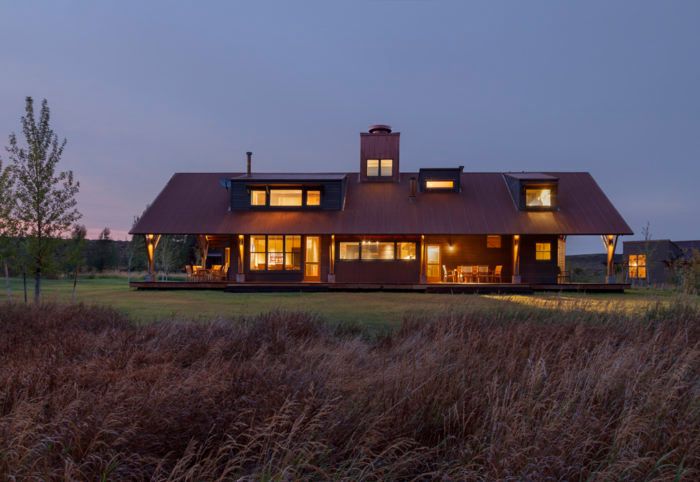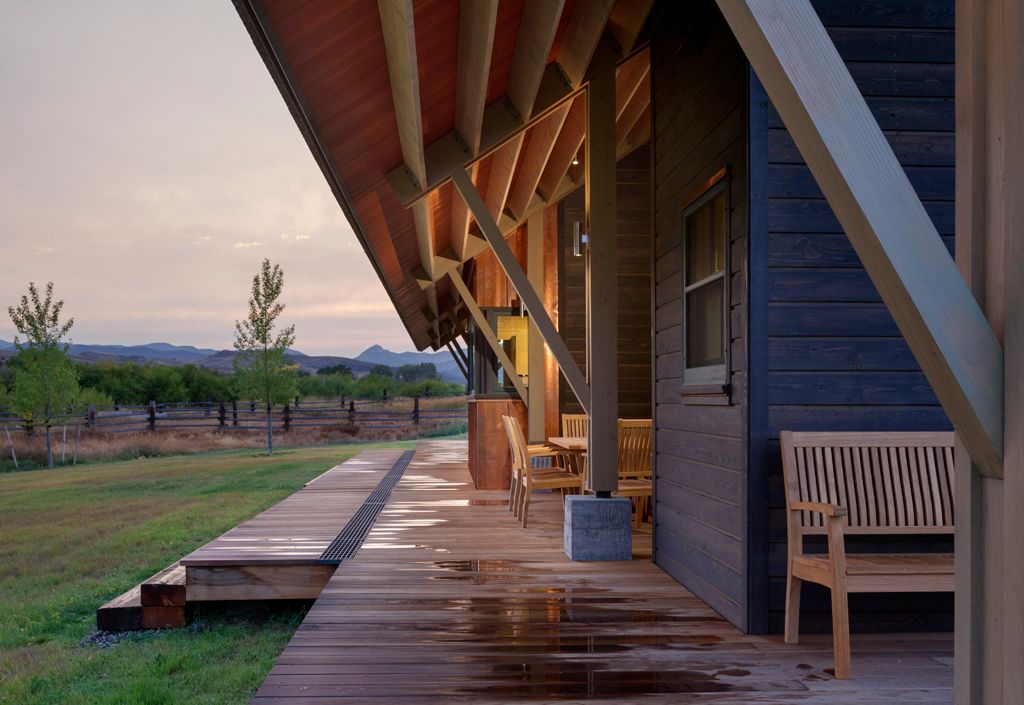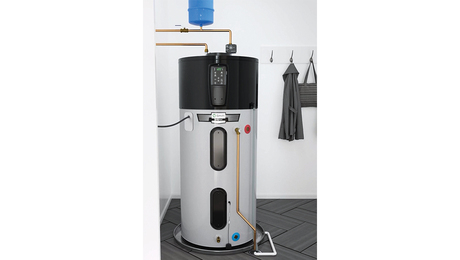
We had been working on restoring the buildings on our client’s cattle ranch for a number of years when we started to design the Cookhouse. The additions and renovations we had already done to the historic homestead were in scale and suited to the site, so we were nervous about adding a new piece. Significantly larger, we were concerned that the addition of two new structures would compete with the Granary, which was the centerpiece of the compound, a landmark visible for three miles from the road that descends into the valley.
Our first decision was to site the Cookhouse across a small creek on the south side of the Granary . The creek—which had become little more than a drainage ditch—was restored and replanted with willows, dogwood, and other native riparian vegetation to provide a degree of separation from the agricultural compound and road beyond. We located the one story Equipment/Car Barn, however, on the far side of the creek, adjacent to the granary, and connected it to the Cookhouse by a footbridge. To bring the scale of the Cookhouse down, we adopted a one-and-a-half-story, broad-eaved, gable-roofed form similar to local hay barns.
The Bracket Creek valley sees severe storms, 115-degree temperature swings, and fickle 50-70 mph winds. Simply building a shelter from these elements would have been a mistake. Rather, the orientation of the building’s axis along with ingenious placement of doors, windows, roofing, and porches create a natural conversation between the imposing yet alluring outside and the cozy but airy inside. The east-west axis is optimal for solar gain and presents the narrow face of the building to the most intense wind and weather. The second story pushes out from underneath the roof to grab light, steal a view, or expel hot air.
In plan, both floors are organized along a central circulation spine. This generous central hallway links all interior spaces and functions not only as a social space, but also as a massive air duct connecting the entire house to a thermal chimney. The thermal chimney punctures the ridge and keeps the house cool even in the extreme heat of summer, making air-conditioning unnecessary. In colder months, the house is heated completely with a ground source heat pump and EPA-rated wood stoves.
The gable roof’s substantial overhang and wrap-around porch provide ample options for working and relaxing outside, protected from the wind, rain, snow, and sun. Indoors, instead of a single “grand room,” there are dozens of places to work, read, cook, sleep, converse, or hang out. The Cookhouse began with a simple directive, but in the end, in meeting the successive challenges, has become a multi-layered and densely-detailed home base.























